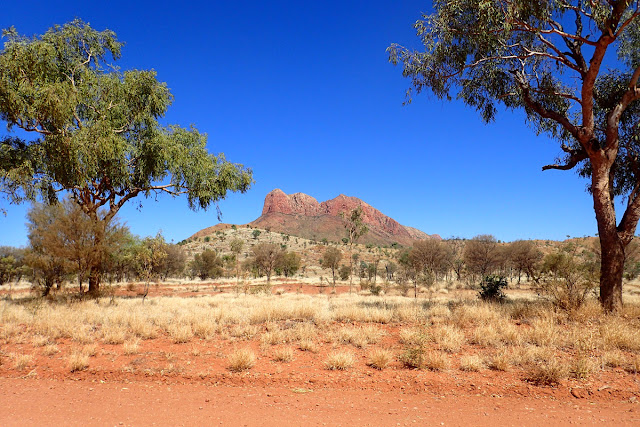September 17th
Next morning we headed off in no hurry at all (still not ‘serious’
4WD people in relation to early morning get ups!!). We gave Big Red another
crack (without success yet again) and landed back in Birdsville just before lunchtime – just in time to have a pie. They were a little less stressed in the
bakery than when we were last here and they were recovering from the Big Red
Bash. Need to mention at this point that we did it!!!! Completed the west to east crossing of the Simpson without any issues at all arriving safe and sound in Birdsville via our own car and not a tow truck. We are VERY happy about this!!!
Should we stay or should we go?? What would we do if we
stayed? Where would we stay? (not keen on the camp ground again). We
deliberated over these questions and more in the Birdsville Hotel with a champagne for me and a beer for Stephen (never too early when you are on holidays).
Still not keen on hitting the
bitumen just yet we decided that Innamincka sounded like a good place to visit and
narrowed the route down to two options – the Cordillo Downs Rd or the Walkers
Crossing Public Access Rd. Thought a visit to the Birdsville Tourist
Information Centre might be helpful. How wrong can one be!!
We asked the lady behind the counter (a local) what the
Cordillo Downs Rd was like at the moment.
Her response - “About the same.”
Us – “Same as what?”
Her – “Same as last week.”
Us – “Sorry but we aren't from around here and don’t know
what it was like last week, could you give us some more information please?’
Her – “Well people have been coming and going along it so it
should be ok.”
Us – “What is ok? Is it graded? Are there many corrugations?
What might the travel time be?”
Her – “They have graded it this year.”
At this stage we were becoming a little exasperated to say
the least.
Us – “What about the Walkers Crossing Rd?”
Her – “Couldn't say about that one. Do you know anything?”
(she asks her colleague who appears to be a German backpacker)
The German backpacker proceeded to be a wealth of information
about both roads and their most recent condition. Go figure!!! We decide on the
Walkers Crossing Public Access Rd and after refuelling and grabbing a few minor
food items we head off south along the Birdsville Track towards the turn off
which is about 100km along and marked by a 44-gallon drum.
Not far before the turn off we pass the Page Family memorial
cross. Tragic story of a family of five who in 1963 endeavoured to drive from
Marree to Birdsville in a Ford V8 in a heat wave. They lost the track and ran
out of fuel and then tried to walk south for help. All five died of thirst and
are buried near the road with a memorial in place. What a tragedy! The message
is the same today as it was then – this is harsh country for which you need to
be thoroughly prepared and not become complacent when travelling in remote
areas. Similar events have occurred more recently. Staying with your vehicle is
certainly the safest and most sensible course of action.
With that sobering thought, we turned onto the Walkers
Crossing Rd and into the Sturt Stony and the Strzelecki Deserts. The first part
of this road is probably some of the most arid and dry country we have passed
through all trip – gibber country. Not much around save for a few emus. We also
pass some sand dunes (because we haven’t had enough of them) but nothing as
large as in the Simpson. The road ranges from a single lane track to service
roads for the gas fields and it is tricky sometimes to stay on the public
access road – fortunately our GPS comes in very useful here and we only make
one wrong turn.
We eventually got to Walkers Crossing at Cooper Creek where
we decide to stay for the night. The crossing is named for Sydney James Walker
who worked in SANTOS Field Services Division at Moomba. SANTOS is a large, predominantly
Australian owned oil and gas company. Its name is an acronym for South Australian
Northern Territory Oil Search. Syd Walker was responsible for the rebuilding of
this crossing of the Cooper Creek which suffered regular flood damage.
Soon after the project was completed Syd had a massive heart attack and in his
honour, the men of Field Services decided to name the crossing after him and built a
memorial at the crossing.
Certainly no water in the creek but lots of trees and bird life and we found a great spot off the road for a quiet evening.














































